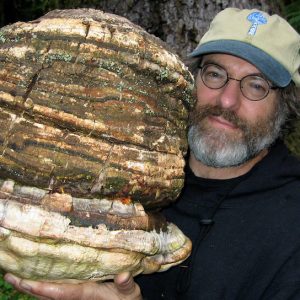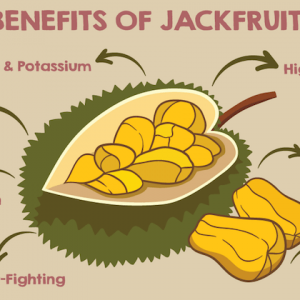
Cases of birds dropping from the sky with evident poisoning symptoms (like tongues protruding out of the mouth) have been steadily increasing over the years. It wasn’t until I saw one myself this summer that it became very raw and real, and quite concerning (especially given how many neighbors spray their lawns over the course of a summer).
The unfortunate reality is, is that pesticides and birds don’t mix. And it’s not just spraying lawns that’s the issue – it’s the large amount of pesticides, herbicides and fertilizers used in Big Agriculture that are interfering with bird populations.
According to two new studies, our dependency and use of pesticides and other chemical fertilizers will have to come to an end if we want a future of a healthy, balanced ecosystem.
Pesticides and Birds: The Silent Killer
Widely-used pesticides chemically related to nicotine (neonicotinoids), may be deadly to birds and linked to some species’ declines, according to a new study.
Researchers at the University of Saskatchewan studied the pesticide imidacloprid, in the nicotine-linked class of chemicals called neonicotinoids, and found that the pesticide had effects on migrating birds’ health and ability to reproduce.
When birds migrate, timing is everything. If birds happen to miss peak season for finding a good mate, food and a nesting site, their chances for survival are slim. And this is exactly what has been happening to migrating birds that consume pesticide-laced seeds.
Toxicologists studying white-crowned sparrows found that these birds became anorexic after consuming neonicotinoid pesticides, leading to dramatic weight loss and subsequent delays in their journeys south.
The study “causatively links a pesticide to something that is really, tangibly negative to birds that is causing their population declines,” study author Christy Morrissey told the Associated Press. “It’s clear evidence these chemicals can affect populations.”
The researchers said that the study might apply to other birds as well, and could be the reason why there has been such a dramatic decline of songbirds in recent decades. In fact, nearly 70 percent of North American farmland bird species are currently experiencing population declines.
But this isn’t the only study that has linked bird declines to pesticide exposure. Neonicotinoid use has also been associated with hummingbird declines, and even bio-persistent pesticides like DDT are still showing up in the dead bodies of birds, as recently found in a bird toxicology report from Belgium.
36 Different Pesticides Found in Thousands of Dead Birds’ Nests
Researchers from Belgium wanted to investigate what was killing thousands of newborn birds in Flanders and Brussels. They launched a crowdsourced probe, and were surprised when they found staggering amounts of pesticides in the bodies of dead tits (a type of bird).
“We found a total of 36 different pesticides in 95 mesh nests,” Geert Gommers, a pesticide expert, said in a statement released with the results.
An analysis of the birds’ nests revealed traces of fungicides, herbicides, insecticides and biocides. What alarmed researchers most was the presence of DDT in 85 of the 95 nests examined, an insecticide that has been banned since 1974.
“That DDT is still present in our environment after all this time is worrying,” the statement read.
The organizations were seriously concerned over the findings, particularly given the birds’ young ages. “The tits were two weeks old at the most and had never been outside their nest,” Gommers wrote.
The research was carried out jointly by bird conservation association Vogelbescherming Vlaanderen and ecological gardening association Velt. The campaign that was launched was called “SOS Mezen” (tit in Dutch).
The campaign encouraged people to flag discoveries of dead tits via the website, and thousands of residents in Flanders and Brussels responded, reporting 4,500 tit deaths.
While further research still needs to be carried out to establish a link between pesticides and bird deaths, it is clear that we need to put an end to our unhealthy relationship with agricultural and lawn-care chemicals.
Bird Numbers Becoming More Scarce
According to a new analysis, decades of bird declines have amounted to nearly 3 billion since the 1970’s.
The research, published in the journal Science, points to a “largely overlooked” crisis affecting North American bird habitats. That is, the amount of agricultural intensification that has taken place over the last 50 years.
“It’s death by a thousand cuts,” said Ken Rosenberg, a conservation scientist with the Cornell Lab of Ornithology and the American Bird Conservancy, in an interview with CTVNews.ca. “A lot of this loss is associated with changes in land use for agriculture. This is something we’re seeing around the world. Creating more and more hostile environments in places that used to support quite a few birds.”
In 1970, the bird population in Canada and the U.S. was around 10 billion. This number should have remained stable among breeding adult birds, but instead dropped by 2.9 billion, according to the analysis by Cornell University researchers.
It is interesting to note that while agriculture has decimated the lands and reduced variety in prey and habitat, it is also the pesticides and herbicides we should question. Birds consume seeds and insects, two food sources that have the ability to be highly contaminated by agricultural chemicals. Seeds are often treated before they are planted, so when a bird has access to poorly buried seeds, or seeds that spilled during planted, they are directly exposed to chemicals.
Farmers could reduce birds’ exposure to these pesticides and herbicides by coming up with better ways to bury seeds, and remove seeds that spill during planting. They could also apply pesticides to plants only after an insect outbreak occurs – but again, since insects are a source of food for many birds, this option may not be best.
The best option? Learning ways of farming that don’t depend on Westernized methods. Utilizing methods like permaculture and traditional farming methods to increase bio-diversity and lower the dependency on chemicals would be optimal.
All Wildlife Affected by Pesticides and Herbicides
The impacts of pesticides on wildlife are extensive. Wildlife can be impacted by pesticides through their direct or indirect application, like pesticide drift, secondary poisoning, runoff into local water bodies, or groundwater contamination. Some animals may even be sprayed directly, while others may consume plants or prey that have been exposed to pesticides.
Being exposed to these harsh chemicals can result in cancer, endocrine disruption, reproductive effects, neurotoxicity, kidney and liver damage, birth defects, and developmental changes.
The effects seen as a direct result of pesticide exposure are as follows:
– hermaphroditic deformities in frogs
– pseudo-hermaphrodite polar bears that are unable to reproduce
– panthers with atrophied testicles
– intersex fish
– inability of bees to navigate and feed
– inability of birds to properly care for their young
– inability of birds to properly sing (making it difficult to attract mates and reproduce)
All of these abnormalities have been observed in mammals, birds, reptiles, fish and mollusks at exposure levels considered “safe” by the U.S. Environmental Protection Agency (EPA).
No level of pesticide or herbicide exposure should be considered safe, especially when we are seeing such a dramatic change in animal behavior and physiology (yes, even in humans).
What You Can Do
There are lots of things you can do to help lower pesticide and herbicide exposure for wildlife and insects alike.
The first thing is getting rid of any pesticides and herbicides you may use yourself on your lawn or other parts you might spray to get rid of weeds. If you don’t like dandelions, maybe start utilizing them as medicine. Or, if you don’t want to do that, you can resort to natural methods of dealing with weeds instead.
You can also vote with your dollar and only purchase organically grown produce and/or processed food items that are made from organic ingredients.
Another thing you can do is sign petitions online that encourage more strict regulations around pesticide and herbicide use, or demanding that high-risk chemicals are banned altogether.
Educating your neighbors, friends and family (especially those who spray their yard) is another great way to spread the message on the dangers of these chemicals.









Lot of birds/bees,Butterflies die due to dehydration,Radiation. pesticides,injuries and getting HIT by overhead Live Electric Cables.They become unconscious and seems like dead and don’t even respond to Water and dies within a few minutes.
Revive, Energise an Multiply your Bees,Birds,Chickens etc
with Life Force Energy Transmitters
No other TOOL can make an injured and unconscious bird to fly off instantly.
Every Apiarist and Bird Lover needs to have the PROVEN Tesla Purple Energy Healing Plates and Disks with them.
BEES and BIRDS stepping on these “Tesla Purple Energy Healing and Reviving PLATES”, gets instantly ENERGISED, Programed and their immunity system strengthened. The injured, hit by Electric Cables, Dehydrated, effects of Pesticides and Radiation and DYING and UNCONSCIOUS Birds, Bees and Butterflies are REVIVED, ENERGISED and HEALED within a SECOND.
What can we do to help a petition we need signatures I am not prepared to sit back and do nothing this as got to stop right now we all av got to get involved we can’t hide from this anymore we all av to face it and take action plz send me whatever I need to help
Unfortunately, the most you can do is support organic farmers and spread the word to your neighbors to stop spraying their lawns.